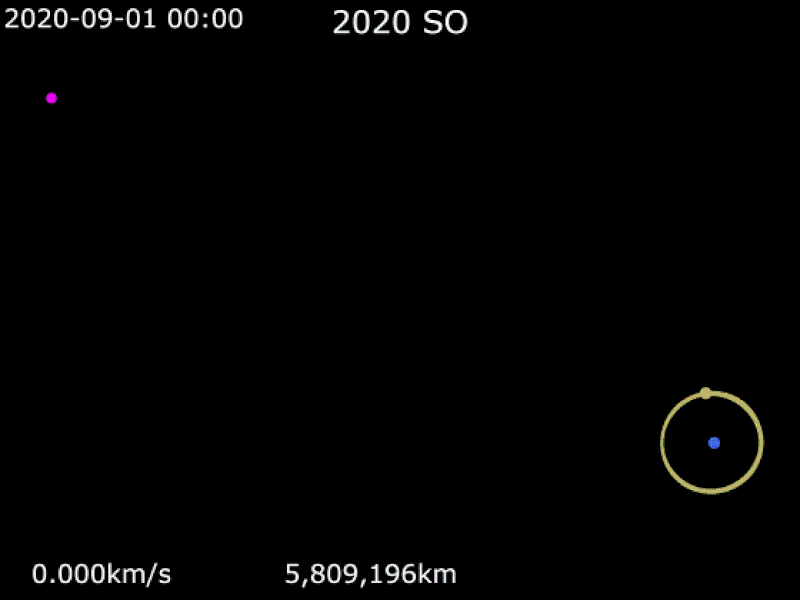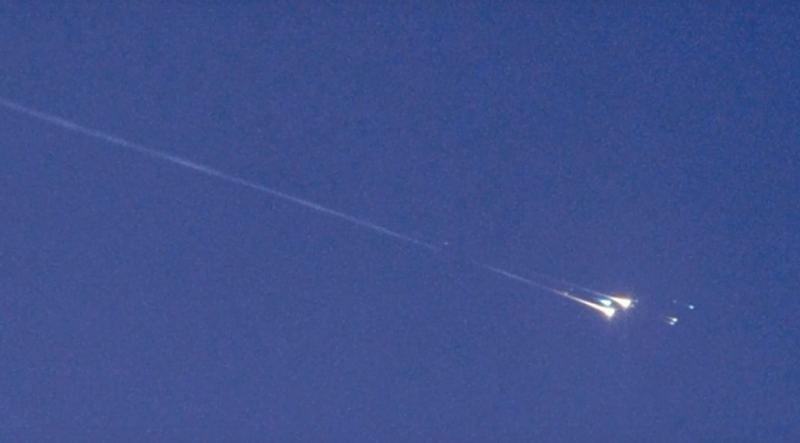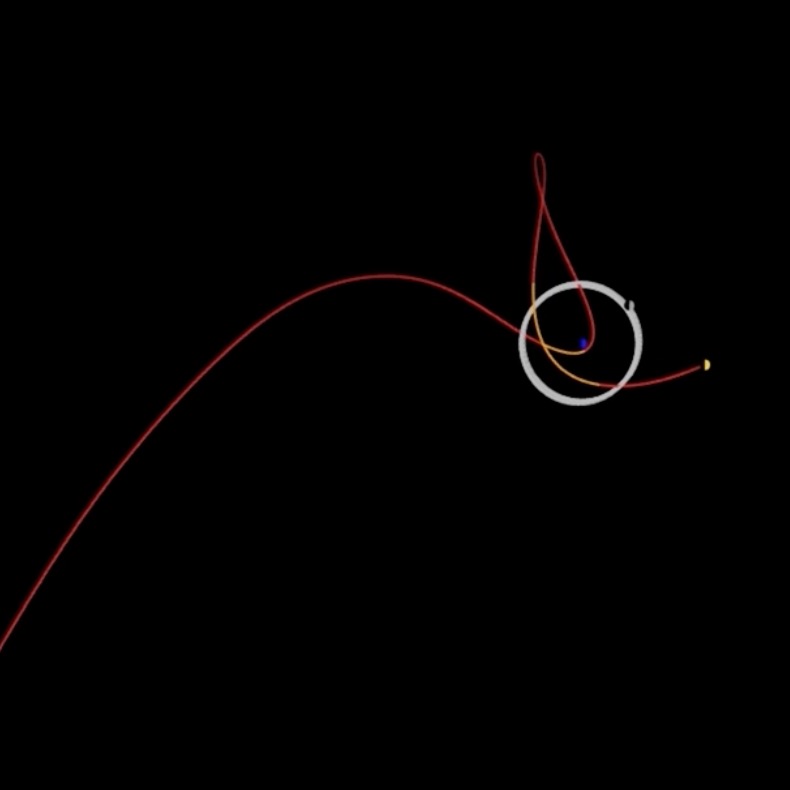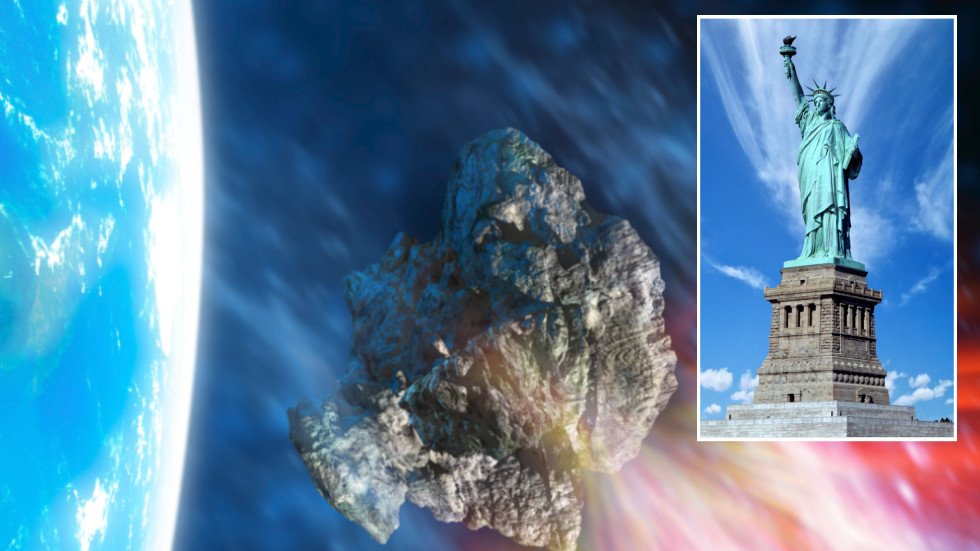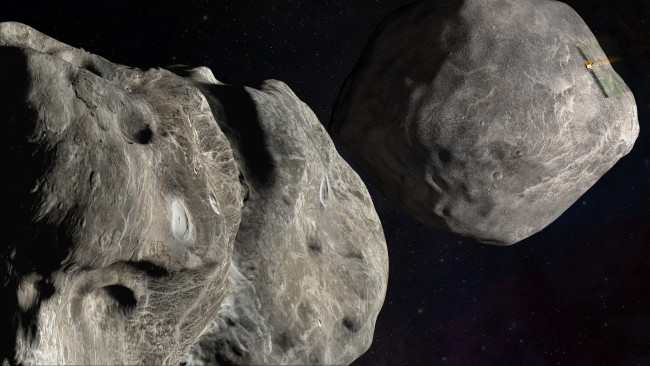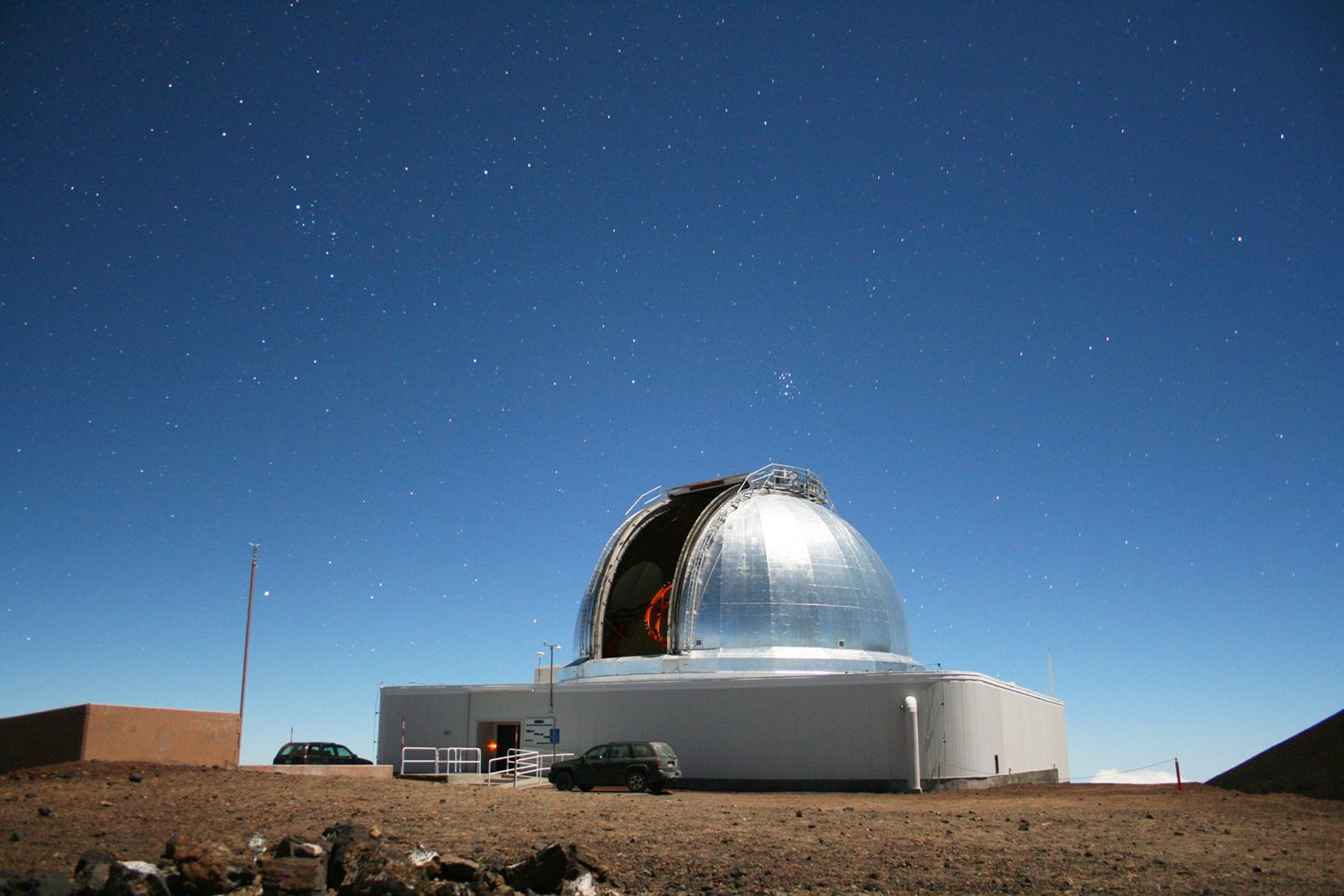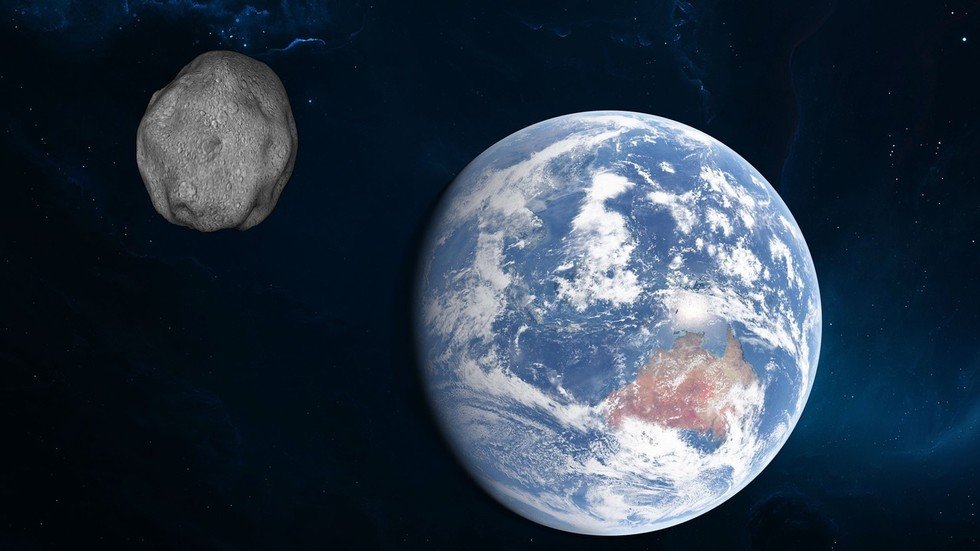On September 17, 2020, astronomers spotted an object on approach to Earth. They assigned it an asteroid label: 2020 SO. Orbit
models quickly showed, however, that both the low speed and trajectory of the approaching object were unusual. The models also showed Earth would capture this object – temporarily – as a new mini-moon. And, on November 8, Earth did capture this object. Now, following a 3-month analysis of its motion,
NASA has confirmed the object is likely no natural object at all. Instead, it appears to be a relic of the early Space Age, a Centaur upper-stage rocket booster, once called
America’s workhorse in space. This particular rocket might be the one that launched the ill-fated
Surveyor 2 spacecraft toward the moon in 1966.
View larger. | This animation shows the orbit of 2020 SO that was captured by Earth’s gravity on November 8, 2020. It will escape in March 2021. Its motion has been speeded up a million times faster than real time. Image via
NASA/JPL-Caltech.
The lost rocket, if that’s what it is, is expected to remain a captive of Earth from October 2020 until March 2021.
It appears to have been pushed from its original trajectory by a small but continuous pressure from sunlight.
It won’t be the first time Earth has captured a mini-moon. But it’s an awesome story of a lost-and-found rocket, originally launched from Earth more than 50 years ago.
By the way, 2020 SO will come extremely close to Earth – about 30,000 miles (50,000 km or 0.13 times the average lunar distance) on December 1.
Virtual Telescope will be showing this intriguing object live a few hours before its fly-by: the live feed is scheduled for November 30, starting at 5 p.m. EST (22 UTC).
Translate UTC to your time and see the poster below for more.
Astronomers first sighted the object in September using the 71-inch (1.8-meter)
Pan-STARRS1 telescope at Maui, Hawaii. They gave it its designation – 2020 SO – and added it as an
Apollo-type asteroid in the
JPL Small-Body Database.
However, 2020 SO was quickly seen to have some features that set it apart from ordinary asteroids. According to NASA/JPL calculations, the object sped past Earth’s moon at a speed of 1,880 miles per hour (3,025 km/h) or 0.84 km per second (.5 mi/sec). That is an extremely slow speed for an asteroid.
These calculations also show the apparent “slow asteroid” orbiting the sun every 1.06 years (387 days). The low relative velocity, along with the Earth-like orbit, both suggest it as an artificial object launched from our planet.
On December 1, 2020, the object labeled 2020 SO will come extremely close – about 30,000 miles (50,000 km or 0.13 times the average lunar distance). Virtual Telescope will be showing this intriguing object live a few hours before its fly-by: the live feed is scheduled for November 30, 2020, starting at 5 p.m. EST (22 UTC;
translate UTC to your time).
Click here for more information on the live viewing.
It was
Paul Chodas, manager of
NASA’s Near Earth Object center at the Jet Propulsion Laboratory in Pasadena, California, who first suggested the object might be the rocket booster of
Surveyor 2, a robotic spacecraft that was launched to the moon on September 20, 1966. Surveyor 2 was meant to be the second lunar lander in the uncrewed
American Surveyor program to explore the moon. The spacecraft blasted into space atop an
Atlas LV-3C Centaur-D rocket from Cape Kennedy, Florida.
A mid-course correction failure caused space controllers to lose contact with the craft three days later, after a thruster failed to ignite. The failure caused the spacecraft to tumble and ultimately to crash near the moon’s Copernicus crater.
View larger. | A model of the ill-fated Surveyor lander, which crashed on the moon in 1966. Image via
NASA/ JPL-Caltech.
Speed ahead to our time and the strange object designed 2020 SO. The object has an estimated size between 20 and 45 feet (6 to 14 meters), a not-unreasonable match for the dimensions of an Atlas LV-3C Centaur-D (approximately 41 feet or 12 meters).
How could we have lost an entire 41-foot-long rocket? Space archaeologist
Alice Gorman of Flinders University in Australia
told ScienceAlert that – before our modern era of reuseable rockets – the rockets that launched craft into space were surprisingly easy to lose. She said:
There are so many factors in the space environment, like gravitational factors and other things that affect movement, that it can sometimes be quite unpredictable.
You have to keep tracking these things, or you can just sort of lose sight of them really easily. And if they do something a little bit unpredictable, and you look the wrong way, then you don’t know where it’s gone. It is quite astonishing, the number of things that have gone missing.
NASA explained that pressure from the sun’s radiation caused the object to change its trajectory:
The pressure exerted by sunlight is small but continuous, and it has a greater effect on a hollow object than a solid one. A spent rocket is essentially an empty tube and therefore is a low-density object with a large surface area. So it will be pushed around by solar radiation pressure more than a solid, high-density clump of rock – much like an empty soda can will be pushed by the wind more than a small stone.
View larger. | This 1964 photograph shows a Centaur upper-stage rocket before being mated to an Atlas booster. A similar Centaur was used during the launch of Surveyor 2 two years later and could now be the object known as 2020 SO … a new temporary mini-moon for Earth. Image via
NASA.
This isn’t the first time Earth has captured a mini-moon.
As you might have realized by now, space is chock full of small asteroids. Once in a while, one of these space rocks is captured,
temporarily, by our planet’s gravity before being cast out back into the solar system at large. Two confirmed mini-moons are
2006 RH120 (in Earth orbit between 2006 and 2007), and
2020 CD3 (in our orbit between 2018 and 2020).
It’s also not the first time we’ve mistaken space junk for an asteroid.
Another small object that was initially thought to be an asteroid was
WT1190F, detected in October 2015 on approach to Earth. Its trajectory suggested it was about to penetrate Earth’s atmosphere near Sri Lanka, in the Indian Ocean, an event that happens with ordinary asteroids
several times every year.
As WT1190F was disintegrating in our atmosphere on November 13, 2015, scientists analyzed its light via
spectroscopy.
This analysis suggested the object might be a spacecraft component or part of a spent rocket, another wandering piece of space junk, returning home.
2020 SO isn’t the first thought to be an asteroid, and later realized to be human-made space junk. Here’s an object tagged as WT1190F entering Earth’s atmosphere south of Sri Lanka on November 13, 2015. Image via IAC/ UAE/ NASA/ ESA.
So
is 2020 SO an ordinary asteroid? Or is it an old earthly rocket returning home? We don’t know yet, but we expect to find out. NASA explained:
Before it leaves, 2020 SO will make two large loops around our planet, with its closest approach on December 1.
During this period, astronomers will get a closer look and study its composition using
spectroscopy to confirm if 2020 SO is indeed an artifact from the early Space Age.
Strange space object 2020 SO was discovered on September 17, 2020 on approach to Earth. On November 8, it slowly drifted into Earth’s sphere of gravitational dominance, a region called the Hill sphere that extends roughly 930,000 miles (1.5 million km) from our planet. That’s where 2020 SO will remain for about 4 months before it escapes back into a new orbit around the sun in March 2021. During that time, it will make 2 large loops around our planet. In this image, the Earth is the blue dot in the center. The moon’s orbit is the white circle. Image via Tony Dunn (
@tony873004 on Twitter).
Bottom line: A newly discovered “asteroid” might become a new mini-moon for Earth. This object is designated 2020 SO and was entered in JPL’s Small-Body Database. But it might be no ordinary asteroid. It might be a lost rocket from the Surveyor 2 mission, originally launched from Earth more than 50 years ago.
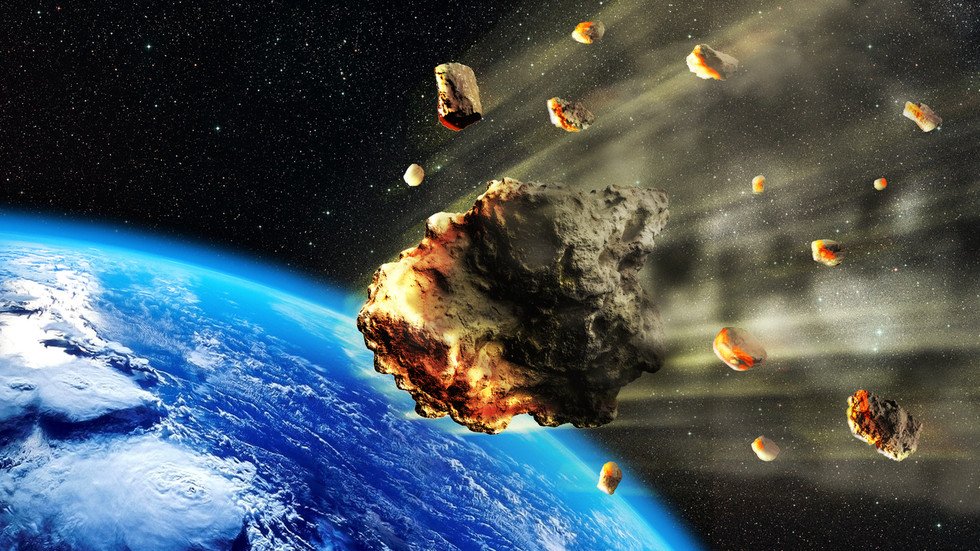
 www.rt.com
16 Nov, 2020
www.rt.com
16 Nov, 2020


